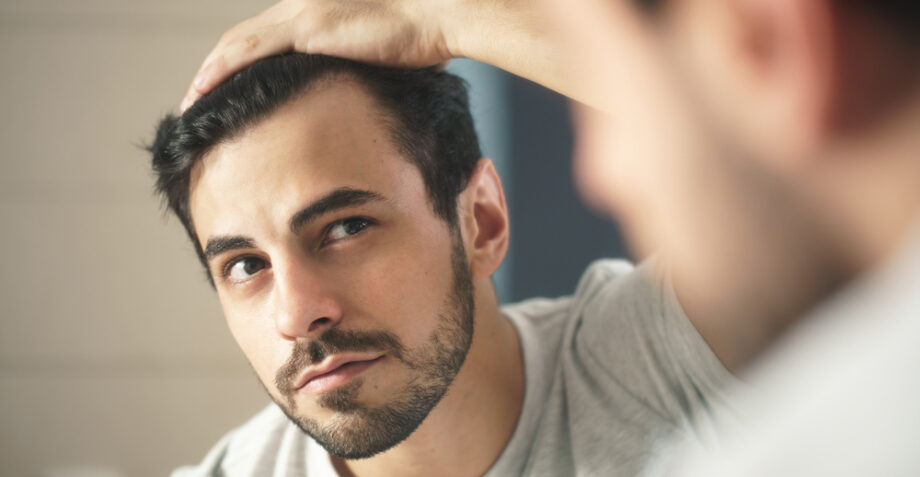Hair loss can strike at any time – and leave us feeling self-conscious, past our prime and unlike ourselves. Learn more to find a way to fight back.
Natural vs. Excessive Hair Loss
Some amount of hair loss is typical – most people shed between 50-100 hairs per day. This doesn’t cause noticeable thinning of the hair, because new hair is growing back in at the same time. This type of hair loss is usually only noticeable when you’re showering or brushing your hair.
If, on the other hand, you’re noticing much more hair loss than usual, accompanied by thinner coverage, your hair growth may be compromised. The cycle of hair growth and shedding may have been disrupted. Or, the hair follicle may have been damaged and replaced with scar tissue.
These changes are due to one or a combination of the following factors.
Top Causes of Hair Loss
- Genetics
- Fluctuating hormones
- Medical conditions
- Certain medications
- Styling habits like extremely tight pigtails or cornrows, or hot oil hair treatments / perms
- A sudden physical or emotional shock (extreme weight loss, surgery, or a death of a loved one)
Hereditary Hair Loss
The most common reason for hair loss is male-pattern baldness or female-pattern baldness. These conditions take hold gradually, with hair loss occurring in specific patterns. Men notice their hairline receding and bald spots forming. Women notice their hair thinning overall, but don’t usually experience localized hair loss.
Genetic factors also impact the age at which hair loss first begins to take hold, how quickly hair loss progresses and how much hair will be lost over time. Male-pattern baldness can begin as early as puberty.
Hormonal Changes Leading to Hair Loss
Sudden hormonal changes or hormonal imbalances can lead to temporary hair loss. This is often related to pregnancy, childbirth or menopause. Thyroid disorders can also cause short-term hair loss, which resolves when the disorder is treated.
Hair Loss & Medical Conditions
- Alopecia areata – Patchy hair loss can occur when the immune system attacks hair follicles. This condition is nonscarring and is called alopecia areata. This leaves round bald patches.
- Scalp infections – Certain infections can affect the scalp’s skin, giving rise to scaly patches that disrupt hair growth. Hair typically grows back with treatment of the infection.
- Trichotillomania – This condition creates an irresistible urge to pull hair out – individuals may do so from the scalp, eyebrows or elsewhere on the body.
- Other disorders – Some diseases cause scarring alopecia, leading to permanent hair loss. These include lichen planus, some forms of lupus, and sarcoidosis.
Medications that May Cause Hair Loss
Drugs used to treat cancer, depression, heart problems, high blood pressure and arthritis can all lead to hair loss, as can hormonal birth control. Excessive amounts of vitamin A may also cause thinning hair. If you receive radiation therapy to the head, hair will likely regrow but may not have the same growth patterns as before therapy.
Effective Hair Loss Treatment
If hair loss is affecting your scalp, you owe it to yourself to learn more about available therapies that could make a difference – without surgery or downtime. Radiance Medspa offers PRP therapy to stimulate fresh growth in dormant follicles. This treatment uses injections of your own platelet rich plasma at the areas of hair loss. In the months after treatment, hair will begin gradually returning. Schedule a consultation to learn whether you are a good candidate, and what to expect from treatment.


